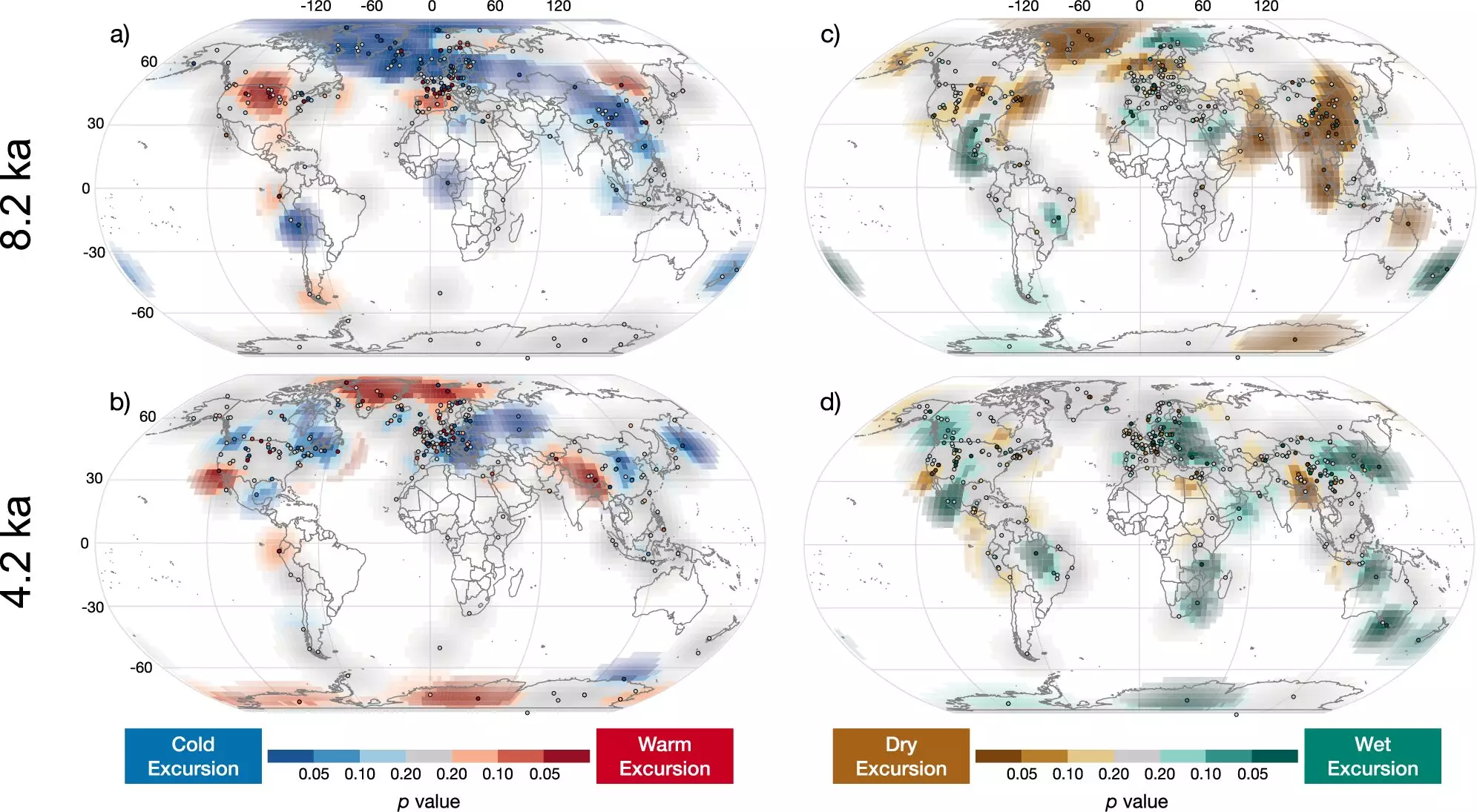The 4.2 thousand years ago (ka) megadrought is often cited as a significant turning point in Earth’s climatic history, associated with the decline of several ancient civilizations. This event has for long been considered a cornerstone in the understanding of climatic upheaval during the Holocene epoch, which started approximately 11,700 years ago. However, recent research conducted by a team from Northern Arizona University challenges the validity of this claim, suggesting that the impacts of the megadrought might not have been as extensive or catastrophic as previously thought. Instead, it appears to be one of many intermittent climate fluctuations that have occurred throughout history, inviting a reevaluation of its perceived global significance.
The Research Approach
The groundbreaking findings were published in Nature Communications, emerging from a unique interdisciplinary study that engaged graduate students in the research process. The team, led by associate professor Nicholas McKay, sifted through a staggering array of over 1,000 datasets, highlighting the complexity and intricacies associated with climate research. Notably, this collaborative effort has produced a paper with a diverse set of co-authors, including both faculty and students, effectively showcasing the benefits of educational environments that integrate real-world research into academic settings.
McKay emphasized the motivation behind the research, stating that the 4.2 ka event was used as a geological marker to delineate and subdivide the Holocene epoch. This prompted the researchers to investigate whether this event warranted such importance based on substantial evidence.
To understand the implications of the 4.2 ka megadrought, the research team developed enhanced analytical methods to assess past climate data comprehensively. They aimed to ascertain the significance of various climatic events over a spanning period of 12,000 years. As they meticulously examined the data, a compelling narrative unfolded. Rather than confirming a singular, transformative drought event that reshaped global climate patterns, the researchers discovered localized climate changes that varied significantly across different geographical regions. This nuanced understanding unveiled a picture of climate variability that was more complex than a singular catastrophic event.
While some areas exhibited climate changes associated with the 4.2 ka event, these observed shifts did not coincide universally, nor did the impacts manifest in uniform ways across the globe. The researchers noted numerous smaller climate events occurring during this period, with the megadrought being just one part of a multifaceted climatic tapestry.
The Broader Context of Climate Variability
In their investigation, the team identified several other significant climate events beyond the 4.2 ka megadrought, such as the well-documented 8.2 ka event, which was characterized by a marked cold phase primarily affecting the North Atlantic region. Other notable climatic changes during the Common Era were also identified, correlating with known periods like the Dark Ages Cold Period and the Medieval Climate Anomaly. These findings revealed that abrupt climatic variations are more prevalent at local scales throughout the Holocene, reinforcing the idea that globally synchronized events have been relatively rare.
Co-author Leah Marshall, a doctoral student, reinforced the implications of these findings, asserting that the study serves as a cautionary tale against interpreting local fluctuations as indicative of broader global phenomena. The results emphasize the importance of a rigorous and data-driven approach when investigating historical climate variability.
Beyond shedding light on past atmospheric conditions, this research has significant implications for how scientists approach future climate modeling and analysis. Understanding past climate dynamics is crucial for predicting how current anthropogenic influences might interact with natural changes. McKay pointed out that the natural climate variations identified in their study typically occur on century timescales, highlighting a stark contrast to the rapid climate changes induced by human activities today.
The ramifications of these insights extend beyond academic discussions; they hold critical relevance for developing effective climate policies and understanding the possible trajectories of future climate patterns. By sharing their analytical methods, the researchers aim to facilitate better exploration of extensive datasets in subsequent climate investigations.
The reevaluation of the 4.2 ka megadrought reveals the necessity of approaching historical climate events with caution, taking into account the localized nature of climate changes throughout history. The collaboration between students and faculty not only yielded new scientific insights but also fostered an environment that encourages diverse perspectives in climate research. As we continue to grapple with the impacts of climate change today, a nuanced understanding of our planet’s climatic past will be indispensable for navigating the future.

